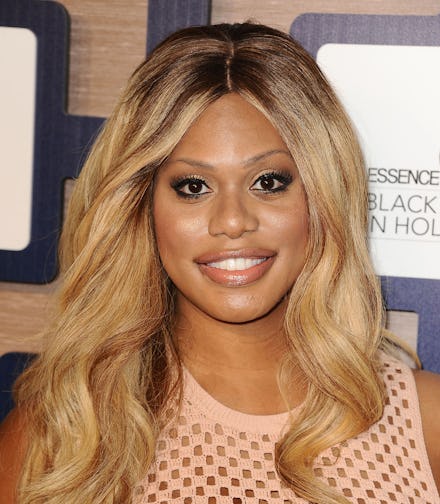No, TV Industry, Being Transgender Is Not a "Hot" Trend

Transgender people were nearly invisible from mainstream media a few years ago. And on the rare occasions they weren't omitted from movies and TV shows, their portrayals were often stereotypical caricatures: A recent GLAAD study showed that between 2002-2012, "offensive representations and storylines" about transgender characters "were found on every major broadcast network and seven different cable networks," and that transgender individuals were largely cast in "victim" roles or as killers, villains or sex workers.
These days, there are far more complex trans characters on screen, played by both transgender and cisgender (or those who aren't trans) actors. In fact, the rise is being deemed a full on "trend" by some in the industry, who have noticed a higher demand for transgender actors during pilot season, KPCC-FM reported Monday.
But while this is an undeniable step forward toward diversifying our media landscape, being trans is not a trend. And this increased quantity of representation, critics note, must not be conflated with quality. Rather than genuinely contribute to the LGBT movement, the increase in trans characters is more likely born from networks' desires to commodify a formula proven to work and to cash in on individuals' experiences for profit.
Who is being represented? Casting transgender roles "does come from a place of, 'these are the boxes you have to check,'" casting director Risa Bramon Garcia told KPCC-FM's The Frame. "There is a lot of pressure on the networks to do the right thing." It's a process that has been termed "outcasting," and a GLAAD survey suggests that it may be responsible for 0.6-point increase in LGBT series regulars in the upcoming TV season.
Not only is this representation often based on profit-driven motivations, but these roles are also largely portrayed by cisgender, heterosexual actors. While transgender actors like Laverne Cox have certainly made an impact in media, some of the most critically acclaimed and anticipated trans roles — like those in Transparent, Dallas Buyers Club and the upcoming film The Danish Girl — are, in fact, portrayed by straight, cisgender men.
It's a phenomenon some in the LGBT community have termed "transface," and has led many to question just how empowering or indicative of real progress these performances can be if they're not giving opportunities to individuals who have actually lived these experiences.
Of course, while this influx of characters should be critically examined, it's undeniably a vast improvement on the homogenous media landscape that came before it. Cox noted in a 2014 speech at Harvard University that while transgender individuals have been present in the media for years, they were often portrayed in a demeaning light and as the targets of insulting jokes on episodes of The Jerry Springer Show and Maury.
Especially in a society mired in transphobia and anti-trans violence, positive representations of trans lives — even if imperfect — can still resonate with viewers. Studies show media depictions can impact viewers' self-esteem and self-conception, which means more recent representations of trans characters as loving family members with complex interior lives are important. "What we're seeing now is trans folks taking more control over how our stories are told and challenging ... the ways in which trans stories are told," Cox said in her speech.
Actor Jeffrey Tambor summed up this conundrum well while accepting a Golden Globe for his portrayal of a trans woman in the critically acclaimed Amazon series Transparent, in which he plays a woman who comes out as trans later in life. "This is much bigger than me," he said.
And he's right: Though these recent examples of trans representation may be mired in corporate desires rather than a benevolent fight for equality, hopefully they will serve as a necessary first step toward a media landscape in which trans characters — and characters representing any marginalized community, for that matter — aren't seen as "trends," but rather simply additional, interesting, complex characters.